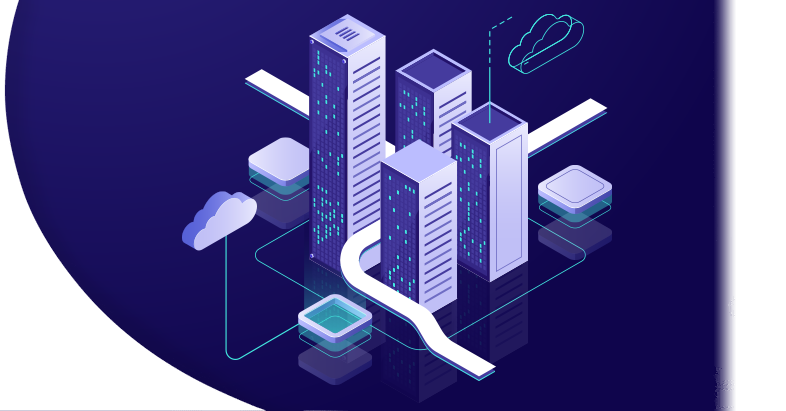This assessment helps customers modernize their server and data center environments and prioritize their workloads and applications to transition to the cloud.
OUTLINE
Transitioning to the cloud, while essential, can be a confusing and frustrating process.
We can help you determine which server workloads and applications to move now with an Infrastructure Optimization Assessment. We’ll gather real-time data on your environment, discuss how infrastructure changes can support your overall business strategy, and recommend which workloads to move first.
Ideal for customers who are concerned about:
- Where to begin their cloud journey
- Aligning their cloud and business strategies
- Transition costs of legacy infrastructure
- Redesign of on prem applications
PURPOSE
The Infrastructure Optimization Engagement is designed to provide the customer with an end-to-end analysis and mapping of their entire IT estate, taking into consideration current deployment, usage, processes, and data. The analysis will be the basis for the evaluation of the customer’s overall infrastructure in relation to their on-premises and cloud-strategy, helping the customer optimize their current application and server workloads while providing insights on the business and technology benefits to moving additional workloads to the cloud. The analysis will also lead to the ability to provide recommendations to optimize policies and procedures to facilitate their digital transformation strategy and implementation.
The SoHo collects the data and performs a full discovery and inventory outlining all Microsoft product deployments and usage. We use both Microsoft and third-party tools, as well as other sources to capture all relevant data.
WHAT’S COVERED
INPUTS FROM THE CUSTOMER
We will require
Based on the scope of the project, the Partner will use one or more automated discovery tools to collect inputs from the customer’s IT estate that will be the basis for establishing the areas of cloud capabilities.
- A comprehensive assessment of the customer’s existing IT infrastructure and environment, including on-premises, cloud, and as available outsourced installations for all affiliate’s locations and/or divisions.
- Includes protocols for accessing the network and corporate network connectivity to external networks.
- Any IT monitoring tools that the customer might use.
- Full and confirmed list of affiliates
- A complete inventory of relevant performance data and utilization such as CPU, network, RAM, disk and storage
Session 1 – Discovery and Define
Gather accurate data from your IT environment.
This will include:
- Real-time details on your environment such as
- Customer’s Active Directory (AD) domain(s) and Lightweight Directory Access Protocol (LDAP) and/or workgroups.
- Records from existing network performance/security monitoring and management tools
- Network management frameworks
- Virtual machine performance monitoring
- Customer Human Resources (HR) records
- Security sources (anti-virus)
- Device Management
- Virtual environment topologies
Additional software assets running on the host besides the virtual machines, such as
- On-premises Exchange, SharePoint, Skype for Business and similar system deployments to understand what functionality will be needed in Office 365
- Windows Server and SQL Server versions to identify if those versions are supported in Azure
- Azure virtual machine performance metrics to assess system utilization and anticipated resource needs, including Azure Virtual Machines capacity, estimated monthly usage, network use (GB), storage use (GB), CPU utilization (%), memory utilization (MB) disk I/O utilization (IOPS) and network utilization –
- In/Out (MB/s)
- Applications or services already running in the Cloud
- Office 365 and Azure system requirements to assist in mapping existing infrastructure to what will be needed to move to the Cloud
Session 2 – Plan and Decide
The data collected during the Infrastructure Optimization Assessment must be analyzed, reviewed with the customer and the Engagement Manager, and agreed upon as an accurate point-in-time reflection of the customer’s current deployment position. This data, along with the additional customer inputs, will provide a basis for the development of a solid Infrastructure Optimization Assessment Customer proposal. Based on the inputs and data collection, the partner will complete the following required analysis:
- Analysis on deployment data including available Microsoft investment entitlements and insights into the benefits of optimization (e.g. SA, upgrades, downgrades, promotions, etc.).
- As necessary, collect and review data from stakeholder interviews and questionnaires, noting any information that was either unavailable or challenging for the customer to gather.
- Review of current cloud environment mapped to optimized environment based on the customer’s goals, including an assessment of capabilities and barriers to move to Office 365, Dynamics 365, or Azure.
- Review of existing SQL Workloads (OLTP, OLAP, etc.) to better determine which server edition to assign to that workload
- Review of usage and adoption scenarios to determine final optimization recommendations for the customer
- Assessment of all business and technology requirements necessary to meet the identified customer challenge set out in the LOE
- Review data to align business strategy and objectives
- Identify prioritized solutions
Session 3 – Migrate (Act)
Based on the results of the discovery planning an action plan is created to cover:
- Prioritize workloads for move to Azure with a road map
- Understand migration investment and benefits
- Pricing and cost of ownership of moving to Azure (Optimal TCO Calculations are based on actual utilization and performance).
- Assessment of the customer’s policies and procedures.
Session 4 – Optimize
Set SMART (Specific, Measurable, Achievable, Relevant and Time-based) goals and to help you measure your progress.
This will
- Track and achieve milestones of the defined roadmap
- Establish a utilization baseline for assessing progress
over time - Understand the Microsoft Incentive Plan of Cloud migrations
END RESULT
By the end of this assessment you obtain an understanding to move your infrastructure and data to the cloud with a predictable no surprise outcome to align the business and IT goals of the organization.







